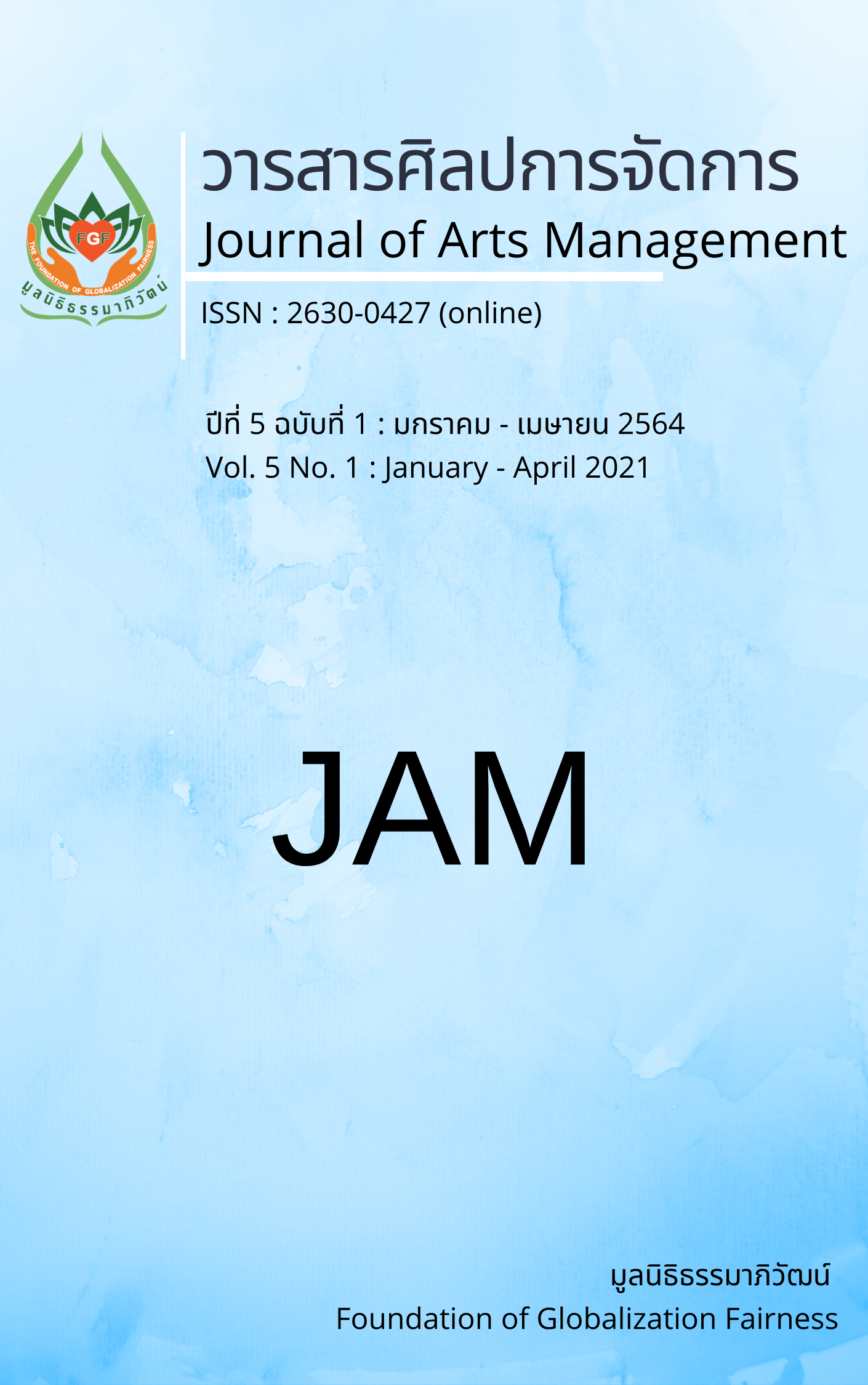Planning for Quality Interior Design Creations
Main Article Content
Abstract
Interior design that leads to quality work. It has to be planned for success with creative factors in all dimensions of that work. It makes an impression on investors or witnesses. Therefore, need to understand the process and having principles of interior design in its entirety, every element, every context around the direction is useful. The beauty of form and layout and psychology of interior design. The professional practice in interior designer must meet the new needs of society and the context changed and must develop themselves to be qualified personnel of young interior designers to create good quality work and systematic. By applying the PDCA quality cycle applied in planning to produce works creatively and with quality. Which is the Important basis for efficient interior design and passed the standards set by the professional field.
Article Details
Views and opinions appearing in articles in the Journal of Arts of Management It is the responsibility of the author of the article. and does not constitute the view and responsibility of the editorial team I agree that the article is copyright of the Arts and Management Journal.
References
จง บุญประชา. (2557). การออกแบบตกแต่งภายใน. กรุงเทพฯ: คณะเทคโนโลยีอุตสาหกรรม สถาบันราชภัฎสวนสุนันทา.
เรืองวิทย์ เกษสุวรรณ. (2545). การปฏิรูประบบราชการ: ภายใต้กระแสการจัดการภาครัฐใหม่และข้อวิพากษ์. กรุงเทพฯ: ซีเอ็ดยูเคชั่น.
วีระพล บดีรัฐ. (2543). PDCA วงจรสู่ความสำเร็จ. กรุงเทพฯ: ประชาชน.
สิริพร กอบนิธิกุลวงศ์. (2560). มุมมองของนักวิชาชีพต่อคุณสมบัติของนักออกแบบภายในรุ่นใหม่. วารสารวิจัยและสาระสถาปัตยกรรม/ผังเมือง, 14(2),15-30.
Architect Council of Thailand. (2012). Curriculums and educational institutions certified by Architect Council of Thailand. Retrieved January 10, 2016. from http://www.act.or.th/th/accredited_ degree.
Guilford, J.P. (1967). The Nature of Human Intelligence. New York: McGraw-Hill.
Nelson, M. S. C. (2010). Creativity in a Season of Technological Change. In C. S. Martin & D. A. Guerin (Eds.), The State of The Interior Design Profession (pp. 187-193). New York: Fairchild Books.
Prasertsuk, S. (2015). Architectural composition for utilities and spatial connection in modern Thai architecture. Journal of Architecture/Planning Research and Studies, 12(1), 29-47.
Sims, R. C., & Koszalka, T. A. (2008). Competencies for the New-Age Instructional Designer. Handbook of Research on Educational Communications and Technology, 3, 569-575.
Taylor. C. W. (1964). Creativity: Progress and Potential. New York: McGraw-Hill.
Torrance, E. P. (1971). Creative Learning and Teaching. New York: Mead and Company.
White, R. W. (1973). Sense of Interpersonal Competence: Two Case Studies and Some Reflection on Origins. (3rd ed.). Chicago: Dorsey Press.


